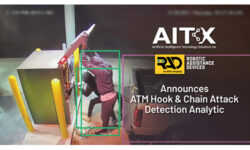Prescribing the Best Medicine for Securing Health-Care Facilities
Examining health-care facilities’ escalating security needs.

Previously, a facility's security may have included a few cameras focused on major entry points, perhaps an intrusion system and minimal credentialing, such as an identification card displaying an employee's photo with basic access features. Today these solutions will not be able to adequately provide the electronic, physical and credentialed security protections necessary to keep America's medical facilities safe.
America’s health-care providers continue to experience rapidly rising demand, in both expenditures and complexity, for new and expanded facilities. Recent years have seen significant technological and medical advances, the introduction of the Affordable Care Act, as well as U.S. population (and thus, patient population) growth. With this explosion of ability, necessity and availability, more than ever health-care facilities must be able to secure, both internally and externally, the well-being and safety of patients, staff, supplies and confidential medical records.
Hospitals and medical clinics are regarded as sanctuaries for patients, environments where quality care merges with a culture of convalescence and healing. Beyond patients seeking treatment, with their families on hand for support, there are doctors, nurses and countless other personnel to be accounted for within any medical facility. These buildings also house confidential patient records, as well as millions of dollars’ worth of equipment and supplies; this includes prescription drugs, hazardous chemicals, and biological and radiological material. There should be no question as to the importance of completely and unequivocally securing these vital elements as efficiently and instantaneously as possible.
RELATED: Medical Center’s Security Updated With Surgical Precision
Make Use of Multilayered Security Approach
The technology and security measures now available to protect doctors’ offices, freestanding and remote clinics, and small-to-large-scale metropolitan hospitals – especially their critical emergency departments (EDs) – have escalated over the past 10 years. Previously, a facility’s security may have included a few cameras focused on major entry points, perhaps an intrusion system and minimal credentialing, such as an identification card displaying an employee’s photo with basic access features. Today these solutions will not be able to adequately provide the electronic, physical and credentialed security protections necessary to keep America’s medical facilities safe.
RELATED: Access Control in the Health-care Market
When a dangerous situation occurs within a hospital, the facility may need to administer an automatic lockdown, with the technology to immediately summon guards and authorities. Ballistic windows and doors, with secure access to credentialed employees, are essential to limiting and preventing violent out-breaks within EDs, for example. Electronic, credentialed identification will also track an employee’s history and whereabouts inside a given building, transmitting precise location with the ability to activate immediate response protocols, should the employee indicate distress.
Tighten Access to Valuable Inventory
Compartmentalizing within the hospital means streamlining more solutions that monitor and limit access to restricted areas to only credentialed individuals. This approach also includes installing a surveillance platform with advanced integration options that document pre- and post-event history whenever an incident does occur, all while maintaining and promoting the privacy of patients. Analytics accrued from the use of access credentials also drive the surveillance system, dictating when and where pictures are taken.
Before, and most notably, since 9/11, the containment of biological, chemical and radiological materials has become a matter of national security. These materials could be used in creating large-scale biochemical weapons, and would certainly pose a threat to a facility’s population and the surrounding general public. Additionally, prescription drugs stored in hospitals are huge targets for criminal activity. Credentialed identification cards track and permit or prohibit access into and out of these restricted areas so all dangerous materials and prescription drugs can be accounted for, as well as monitored for who accesses them and when. Having this kind of stringent system in place can also control the access to and use of multimillion-dollar pieces of medical equipment.
As we enter into a new age in health care, the number of people enrolled in the health-care system is increasing swiftly, forcing a paradigm of expansion for providers throughout the country. With this expansion comes a heightened responsibility to maintain a safe environment for both staff and patients, and to be equipped to aptly handle a broad range of security threats – from potential violence in the ED to biochemical terrorist attempts. Through all of this, it’s about prescribing the right security solution to fit a facility’s specific needs and challenges. For security directors and staff members, this is about installing a cost-effective security solution to bolster the quality of patient care, even amidst stricter regulations and patient increase. For systems integrators, that means working closely with a facility’s risk management team, so that the top security priorities drive the solution.
If you enjoyed this article and want to receive more valuable industry content like this, click here to sign up for our FREE digital newsletters!

Security Is Our Business, Too
For professionals who recommend, buy and install all types of electronic security equipment, a free subscription to Commercial Integrator + Security Sales & Integration is like having a consultant on call. You’ll find an ideal balance of technology and business coverage, with installation tips and techniques for products and updates on how to add to your bottom line.
A FREE subscription to the top resource for security and integration industry will prove to be invaluable.








